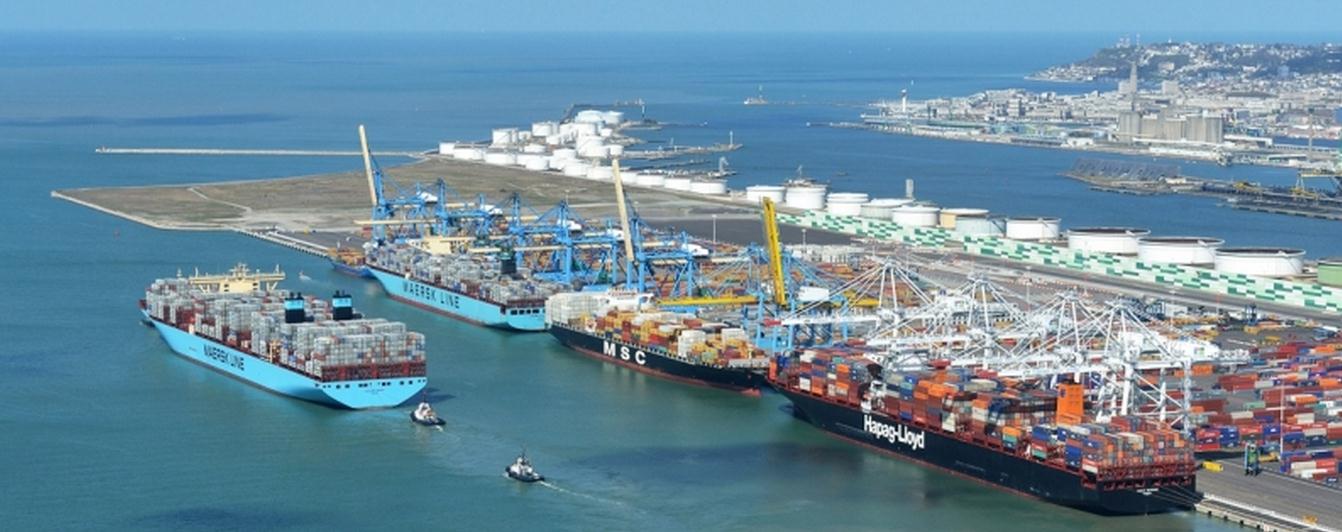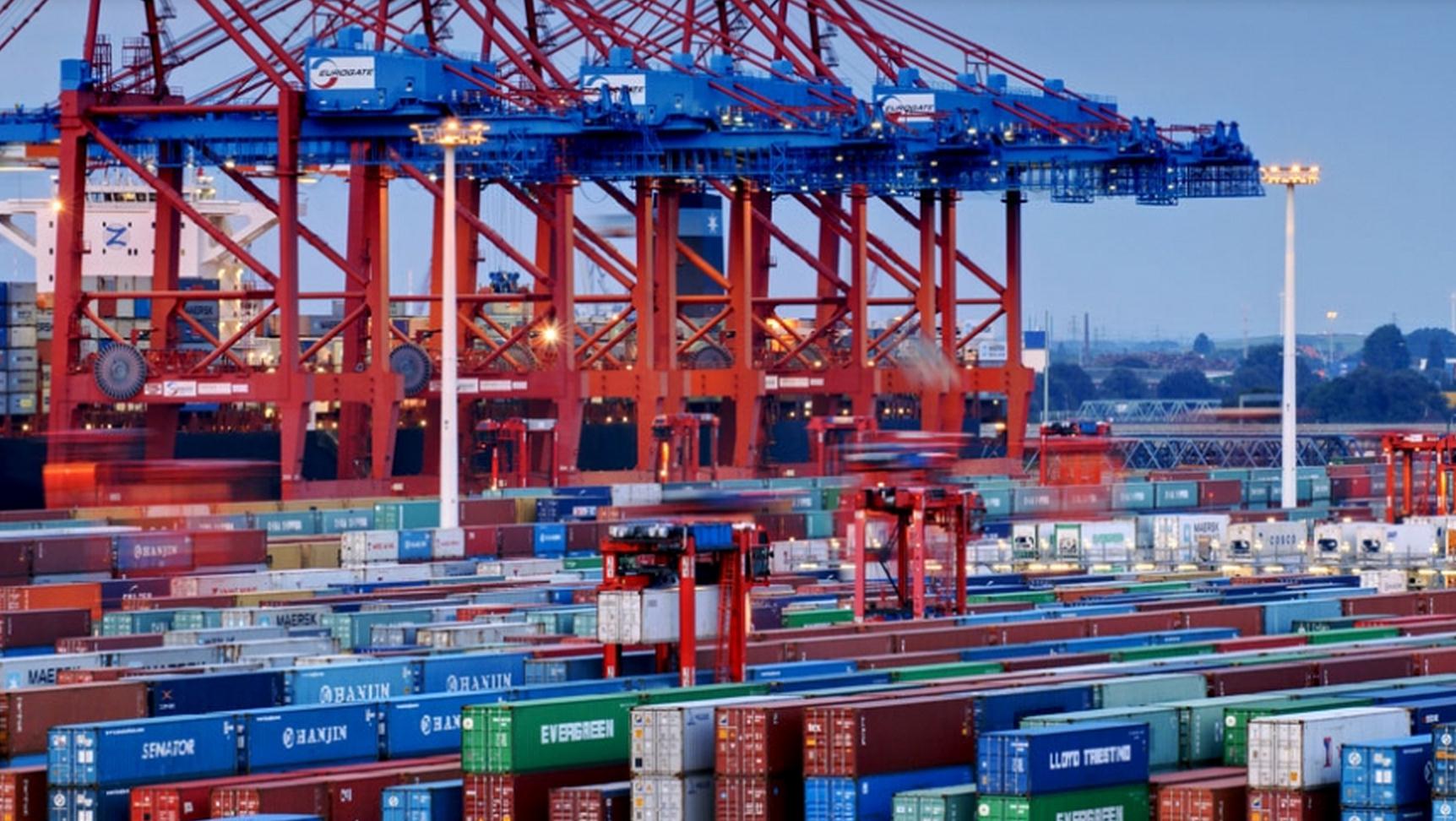With the possibility of a Greek bailout deal still under discussions and ongoing economic sanctions on Russia, the future of Asia-Europe sea freight is far from certain.
Hamburg Süd, which started Asia-Europe services at the end of 2014 and is a relatively new entrant to the market, has already felt the effects.
“We are in the process of gradually increasing our allocations and are satisfied with the way we have been able to consistently build up our performance, but we are clearly not satisfied with the rate development in the trade which has reached unsustainable levels,” says Frank Smet, executive board member of Hamburg Süd. “As far as the impact of the Greek debt crisis is concerned, even though we do not operate to and from Greece, it is clear that the uncertainty of the situation has weighed on consumers in the EU and contributed to the lower trade volumes from Asia. Equally or perhaps more influential on Asia-EU trade have been the crisis in Ukraine and the depreciation of the euro.”
Similarly, the troubles in Greece per se don’t seem to have had as much of an impact as one would have thought on the Eurogate container terminal at the port of Hamburg.
“Eurogate has not really been affected,” says Peter Zielinski, managing director of Eurogate. “In 2014, the number of containers we handled increased by 16.8%, while the total volume at Hamburg increased by only 3%.”
The port of Hamburg handled about 10 million TEUs overall in 2014, but Zielinski says that he is expecting only a small increase in 2015 to about 10.5 million TEUs.
“In total, Germany, Antwerp and Rotterdam have lost 15-18% of import cargo between 2014 and 2015 because of many reasons – the Greek crisis, the bad exchange rate of the euro, and the problems with Russia and Ukraine,” he says. “Cargo from that region dropped drastically to almost zero. We used to handle a lot of Russian transhipment cargo at Hamburg – about 70%.”
The sanctions imposed by the EU and the US on Russia have had “a very negative effect” on the company, probably more so than the Greek debt crisis.
Russia-bound cargo, which originates mainly from China, Japan and South Korea, usually consists of automotive parts, electronics and common general consumer goods, according to Eurogate. About 50-60% of the export volume to Russia has been returning as empty containers.
“Most Russian cargo is taken by feeder vessel to and from the Russian ports of St. Petersburg and Ust-Luga,” says Zielinski. “Eurogate is actually affected twice: once at the German ports and once at Ust-Luga, where we have a 20% share in the terminal.”
Zielinski adds that he does not see much of a change to the situation in 2015, but hopes the situation will start to clear up in 2016.
For HAROPA, the collective organization managing the ports of Le Havre, Rouen and Paris, the total throughout in 2014 increased by 2.3% to 2.68 million TEUs.

“In terms of tonnage, the increase was 4.9% to 26.9 million tonnes,” says Christophe Cheyroux, greater China representative of HAROPA. “This last number shows that the increase is not repositioning traffic for empty containers, but a genuine increase in freight traffic. These results confirm that the HAROPA ports are increasing their market share among the northwestern European ports.”
According to an official document, from January 2015 through to May 2015, HAROPA handled 10.7 million tonnes, which was a 0.7% decrease compared to 2014, and just over 1 million TEUs, a rise of 0.8%.
While Cheyroux can’t comment on how the Greek crisis has affected HAROPA during the first half of the year, he does say that the ongoing negotiations between the Greek government and the EU to find solutions are “a good turn of events” for Asia-Europe trade.
In that regard, HAROPA will have to continue to promote and stimulate the Asia-Europe business.
“It’s important to help exporters understand the specificities of the European market,” says Cheyroux. “That’s why we hold regular commercial events and presentations to explain Europe as a market. We also have permanent offices in the major Asian markets to provide regular updates explaining the changes happening not only in France but in Europe generally.”
The recent development of new overland rail freight links through Kazakhstan and Russia provides shippers with a faster option between Asia and Europe, but it will, at most, offer an alternative because it doesn’t compete directly with marine cargo, according to Rashid Abdulla, senior vice president and managing director of the Asia-Pacific at DP World.
“Transport by sea is still the cheapest means of cargo shipping, especially at a time when bunker price is low and marine freight rate is at an all-time low,” says Abdulla. “Rail freight offers a faster turn time and direct reach to hinterlands, so complements sea freight rather than competes in most cases. The majority of sea freight is cost-sensitive and most customers will still prefer transport by sea.”
The port of Hamburg, meanwhile, is embracing the arrival of freight trains from Asia. Between six and 10 trains arrive into Germany from China every week, representing a volume of 480-800 TEUs in both directions.

“About half of these carry Hamburg cargo, and the other half arrives at Duisburg, bound for Rotterdam. The Hamburg trains use the station at our terminal and we handle their cargo,” Zielinski says. “So we haven’t really lost anything – we’ve just changed the part where we operate. Therefore, we don’t need to be too nervous about the emergence of rail, because there isn’t much difference for us.”
It is a bit of a paradox, then, that Hamburg has the best capabilities in Europe to handle trains, but has a problem with the river Elbe, on which the port is located.
“Ships are getting bigger and bigger, but the Elbe stays the same,” says Zielinski. “We have still not received the green light from the courts to dredge the river. The deepening and widening process is absolutely essential. At this stage, we can only try, together with the port authority, to harmonize traffic and to minimize waiting times by a mutual nautical terminal coordination organization.”
The ocean-facing port of Le Havre has perhaps less of an issue with ultra-large ships. In 2014, it received more than 350 ultra-large container ships with a capacity of more than 10,000 TEUs – an average of almost one mega vessel per day.
“We are concentrating on developing our multimodal capabilities to be able to send these high numbers of containers to their final destinations as fast as possible,” says Cheyroux. “The latest effort is our new 140 million-Euro multimodal platform with a capacity of 300,000 TEUs per year for rail and river trade. This is expected to open before the end of 2015 and will greatly increase hinterland traffic from the HAROPA ports.”
One major hurdle for HAROPA for the rest of the year involves a new French tax procedure.
“There have been major changes in VAT in France with possibilities of VAT-balancing, meaning no payment and deferment to the next month, or single domiciliation procedures for goods with the EU as their final destination,” says Cheyroux. “These bring very competitive advantages in taxes when goods enter through France. The challenge is to explain these changes to the main exporters in China and help them save on these costs.”
The challenges facing Hamburg Süd, according to Smet, are largely those facing the industry. “We see a lot of uncertainty in the world and therefore volume growth will not be sufficient to absorb the capacity increase due to new tonnage coming on stream,” he says. “It will therefore be necessary to manage the influx of additional capacity in such a way that the supply and demand balance is not overly affected.”
Although the shipping line could arguably have entered the market under less volatile conditions, it remains committed to this major trade lane.
“We see the Asia-Europe business as an important part of Hamburg Süd’s network in both the short term and long term,” says Smet. “We also believe that the trade will eventually have to return to a level of stability required to justify the heavy investments needed to keep improving service levels.”
Abdulla, citing low cargo demand from the Far East to Europe and the voiding of more than 10% of Asia-Europe sailings, says that demand will remain low in the short term. “Forecasters believe this may worsen further in 2015-2016 when 18,000 TEU vessels are progressively added to the global fleet,” he says. “It is not impossible to see further consolidation and carriers merging or expanding carrier alliances in a market needing to restore a demand and supply balance.”
Eurogate is also not very optimistic as to the state of the Asia-Europe shipping market. “Overall, the prospects for 2015 are not positive compared to 2014, and we will definitely not reach an increase of 16.8%,” says Zielinski. “We trust we can probably increase the total throughput at Hamburg by 2-3%.”
There is one other source of uncertainty, though. Zielinski says that incoming migrants could increase the population in Hamburg and in the country by a significant amount in the years to come.
“Then, the whole nature of trade and cargo movements could change completely,” he says. “This, in fact, is something unknown to us for the time being, but it will be very interesting to see what is going on and what will happen.”
By Jeffrey Lee
Staff Writer | Hong Kong



